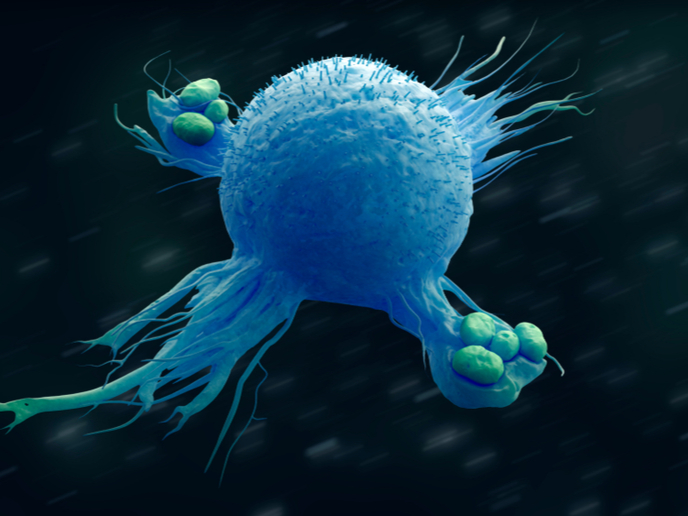Maintaining proteostasis may slow ageing and related diseases
Protein homeostasis(opens in new window), or proteostasis, describes the work of a complex network of pathways essential to cell function and viability. It ensures the correct concentration, folding and interactions of proteins from synthesis to their degradation. As cells’ inability to maintain proteostasis is a hallmark of ageing and age-related diseases such as Alzheimer’s(opens in new window) (ALD), Parkinson’s(opens in new window) (PD) and Huntington’s(opens in new window) (HD), it is hypothesised that maintaining it could delay or prevent ageing and diseases. To gain a better understanding of how proteostasis is regulated, the StemProteostasis project, funded by the European Research Council(opens in new window), studied human embryonic stem cells (hESCs) and induced pluripotent stem cells (iPSCs), as both replicate continuously without ageing. The project’s work combined human stem cell research, disease modelling, proteomics and genetics analysis. Applying their findings, the team uncovered novel mechanisms of longevity(opens in new window) that might offer protection from symptoms associated with human age-related diseases. “StemProteostasis led to many exciting findings with important implications not only for ageing and age-related diseases, but also specifically for stem cell research, cell reprogramming, cell therapy, neurogenesis and plant biology,” says project coordinator David Vilchez(opens in new window).
The proteasome system
Mammalian cells typically contain over 10 000 proteins, adjusted to cell function. After proteins are synthesised or created, they are folded into a structure suitable for their function, but some misfold and aggregate, degrading cell function. Additionally, stress, ageing or disease-related mutations also cause degradation, leading to disease. A component of the proteostasis network called the proteasome clears these spent proteins. In StemProteostasis, experiments concentrated on a nematode/worm called Caenorhabditis elegans(opens in new window). With its biology sharing many mammalian features and its 19-day lifespan, it is a research favourite and so is accompanied by well-established genetic manipulation protocols and age-related disease models. The team had already discovered that hESCs increase proteasome activity through raised levels of a molecular activator called RPN-6, which also helps stem cells differentiate into specific cells. Experimentation yielded the key discovery that by mimicking this process, raising RPN-6 levels in the differentiated cells of C. elegans, the animal’s longevity was extended and the accumulation of disease-related proteins was delayed. “This clearly tells us that the proteasome regulates not only hESCs/iPSCs but also ageing and the onset of age-related diseases,” explains Vilchez. Further research identified several proteostasis components – such as the UBR5 E3 enzyme(opens in new window), the chaperonin subunit CCT8(opens in new window) and the RNA-binding protein CSDE1(opens in new window) – that suppress disease-related protein aggregation in human stem cells and influence differentiation. The team found that modulation of either UBR5 or CCT8 can suppress the accumulation of disease-related proteins in neurons, while extending organismal longevity. Unexpectedly, they also discovered that RNA-binding proteins(opens in new window) in germline stem cells have a role in regulating longevity and protein aggregation in neurons, holding out hope for a better understanding of HD and ALD. “One of the biggest surprises was a challenge to the established paradigm that long lifespans entail reduced fertility. We found that germline stem cells can gather environmental data and communicate it to somatic tissues, such as neurons, to increase fertility while safeguarding longevity(opens in new window),” adds Vilchez.
Meeting the coming challenges
By 2050, the global population over 80 is forecast to triple(opens in new window). Although a positive health outcome, this trend will see an increasing prevalence of age-related diseases, with the associated financial and social burdens. “The molecular mechanisms underlying ageing are only beginning to be unravelled and we are proud to be opening many new research doors,” says Vilchez. The project’s data sets, proteomics methodology(opens in new window) and specially created bioinformatics tools(opens in new window) are now publicly available.







